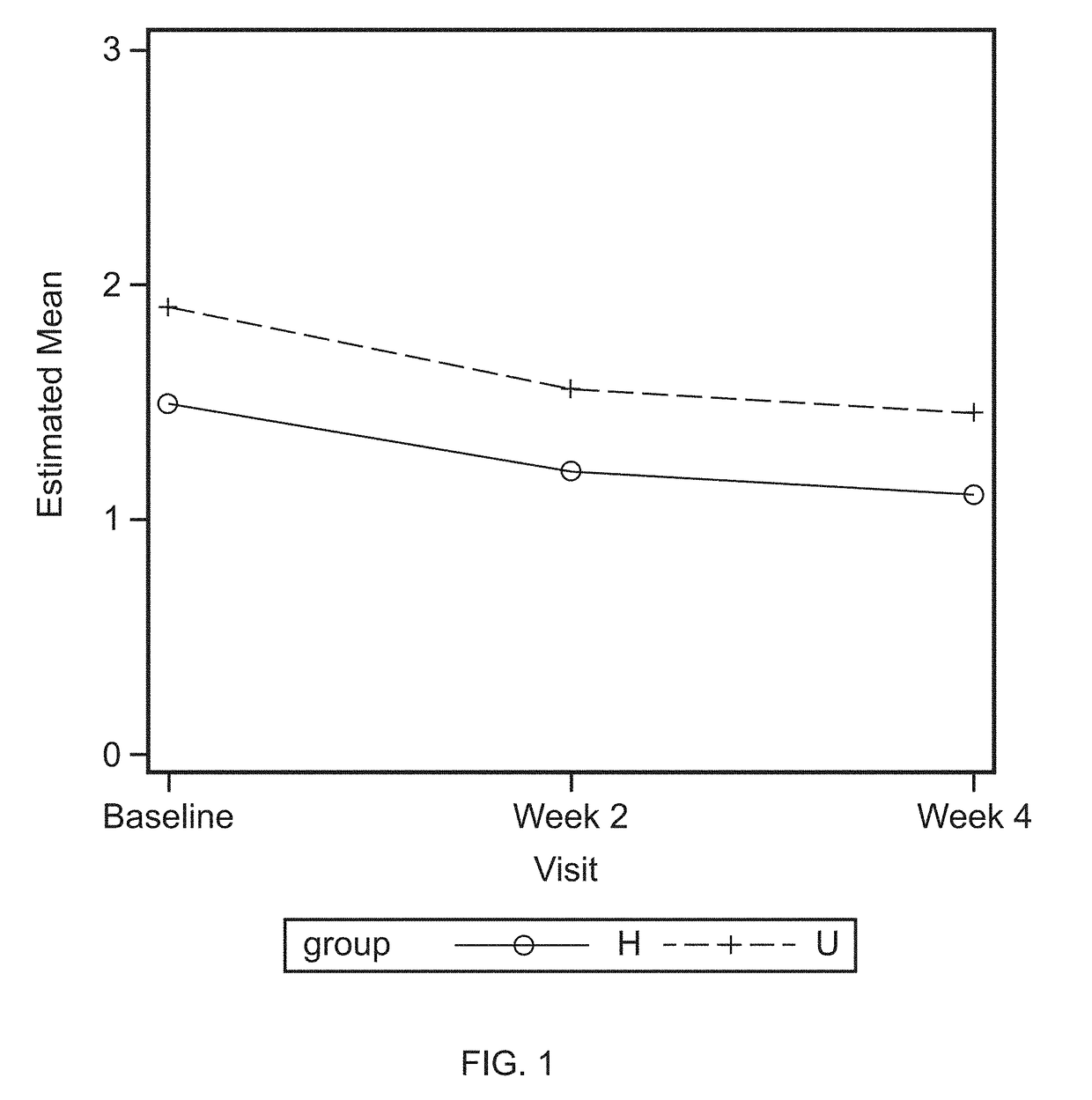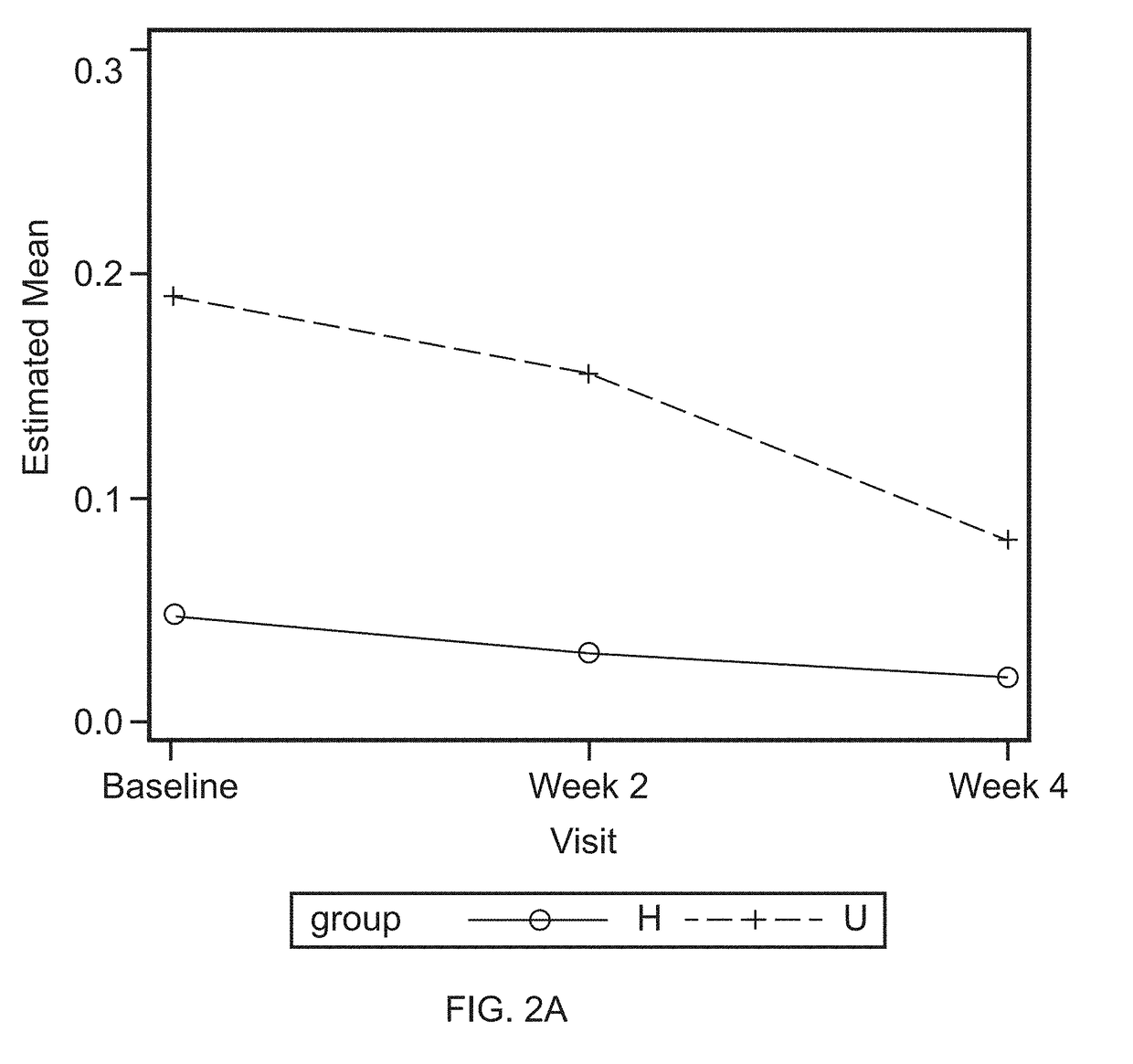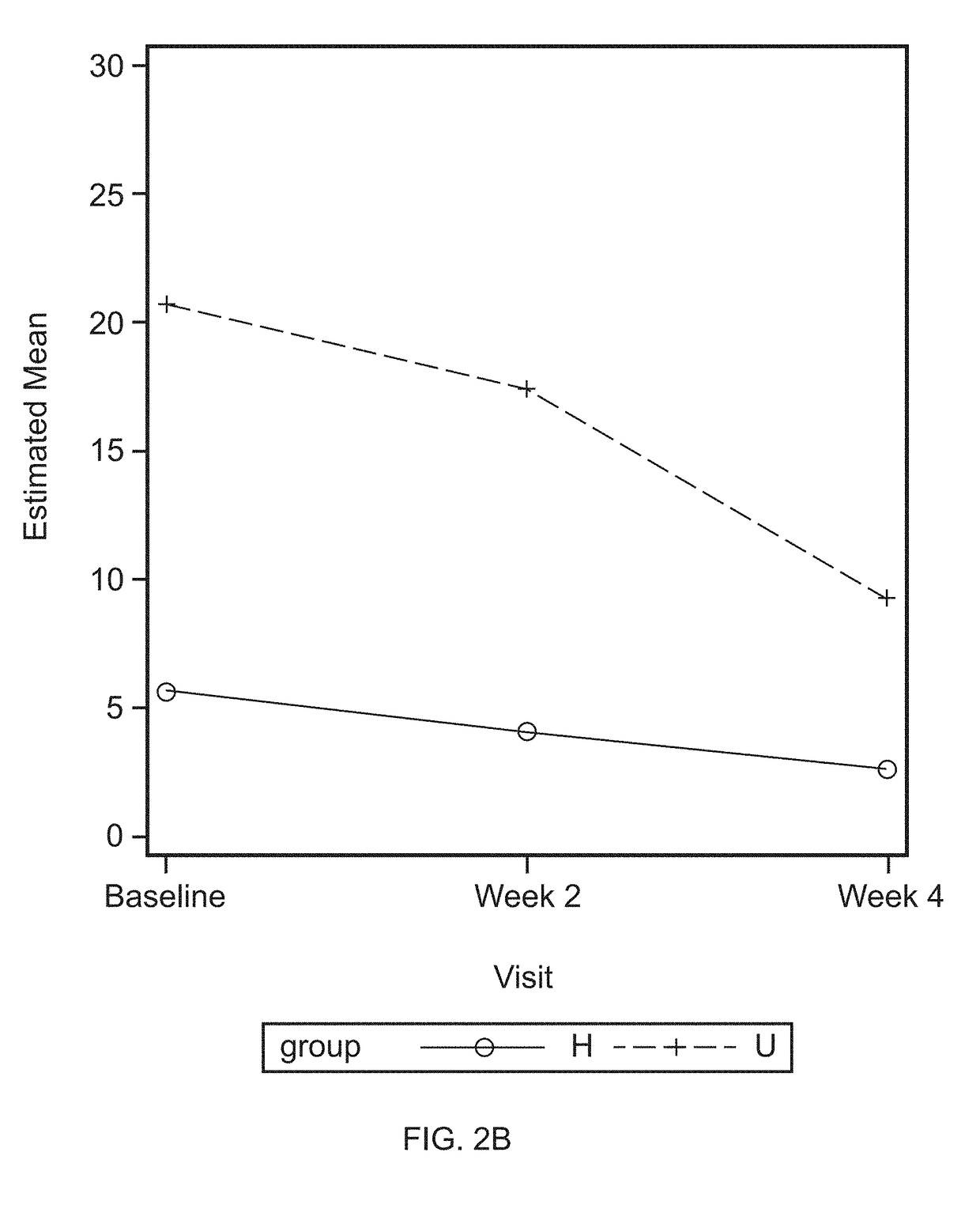Methods for sampling and measuring oral lavage proteins
a technology of oral cavity and protein, applied in the field of oral cavity sampling and measurement, can solve the problems of variable saliva composition, less efficient fermentation, and inability to cellular respiration
- Summary
- Abstract
- Description
- Claims
- Application Information
AI Technical Summary
Benefits of technology
Problems solved by technology
Method used
Image
Examples
example 1
A Method to Collect Oral Lavage to Assess Changes in Gingivitis-Related Molecular Markers
[0063]Assessing the degree of gingivitis in a person is generally done by a qualified examiner using clinical measures, such as gum redness, gum bleeding or pocket depth. While the measures are based on professionally developed scales, the actual values can vary due to differences between examiners. To reduce or remove these variances it is desirable to have objective readings from instruments that are free of differences between human examiners. The sample collection described below is quantifiable objective measurement of the degree of gingivitis.
[0064]A clinical study was conducted to evaluate sample collection methods and measurement procedures. It was a controlled, examiner-blind study. Forty panelists satisfying the inclusion / exclusion criteria were enrolled. Twenty (20) panelists were qualified as healthy—with up to 3 bleeding sites and with all pockets less than or equal to 2 mm deep and...
example 2
Changes of Modified Gingival Index (MGI) and Gingival Bleeding Index (GBI) after Four Week Application of Pro-Health Clinical Gum Protection Toothpaste
[0070]The clinical study was carried out with two groups of panelists as described in Example 1: low bleeders (healthy, non-gingivitis) and high bleeders (chronic gingivitis, unhealthy). All panelists used investigative products for four weeks, as described in Example 1. Modified gingival index (MGI) and gingival bleeding index (GBI) were determined prior to application of the investigative products (baseline), and at week 2 and week 4 of application of the investigative products. MGI was higher in the unhealthy (high bleeder) panelists than the healthy panelists (low bleeders), represented by U and H, respectively, in FIG. 1. MGI was reduced, as compared to baseline, during week 2 and 4 of application of the investigative products for both healthy and unhealthy panelists.
[0071]Similarly, gingival bleeding index (GBI) was higher in th...
example 3
Proteins in Oral Lavage
[0072]Oral lavage samples were collected, as described as in Example 1, before treatment (baseline) and at the end of a four week application of investigative products. The oral lavage samples were divided into four groups: Low bleeder baseline, Low bleeder week 4, High bleeder baseline, and High bleeder week 4. Each group consists of 20 samples. Ten samples from each of the three sets of samples, including Low bleeder baseline, High bleeder baseline, and High bleeder week 4, were sent to SomaLogic, Inc. (Boulder, Colo.) for protein measurement.
[0073]Oral lavage contains proteins secreted from gingival epithelium, oral mucosa, infiltrated neutrophils, lymphocytes, and monocytes of blood. In addition, it also includes microbial proteins.
[0074]As shown in TABLE 1, enzymes involved in glycolysis, such as Glucose-6-phosphate isomerase, Fructose-bisphosphate aldolase A, triosephosphate isomerase, and Glyceraldehyde-3-phosphate dehydrogenase, Phosphoglycerate kinase...
PUM
| Property | Measurement | Unit |
|---|---|---|
| pH | aaaaa | aaaaa |
| pH | aaaaa | aaaaa |
| temperature | aaaaa | aaaaa |
Abstract
Description
Claims
Application Information
 Login to View More
Login to View More - R&D
- Intellectual Property
- Life Sciences
- Materials
- Tech Scout
- Unparalleled Data Quality
- Higher Quality Content
- 60% Fewer Hallucinations
Browse by: Latest US Patents, China's latest patents, Technical Efficacy Thesaurus, Application Domain, Technology Topic, Popular Technical Reports.
© 2025 PatSnap. All rights reserved.Legal|Privacy policy|Modern Slavery Act Transparency Statement|Sitemap|About US| Contact US: help@patsnap.com



